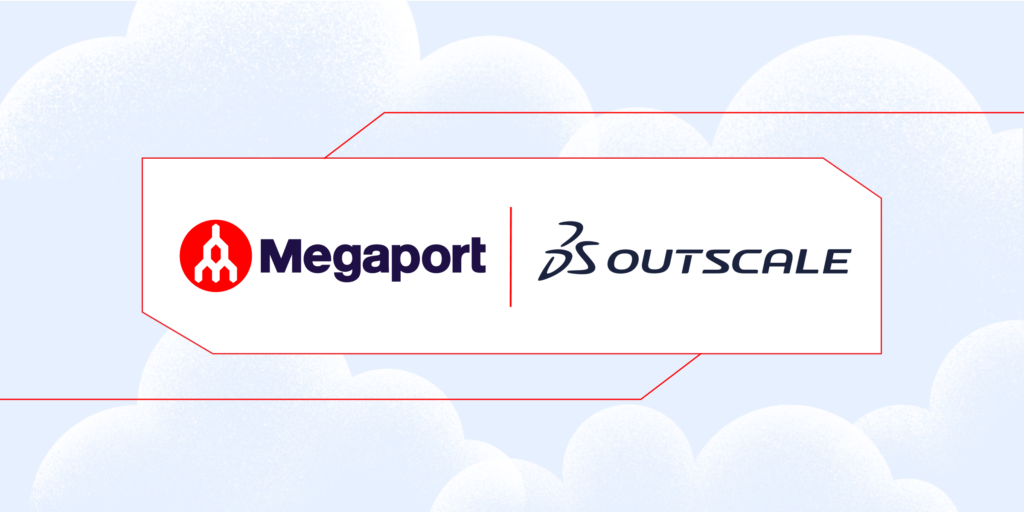
Three Hidden Costs in Your Multicloud Setup
- Cloud networking
- July 11, 2022
- RSS Feed
If you’re looking to improve your business’ bottom line, there are a few creeping fees to be aware of when it comes to the cloud. Here’s how to manage them.
It’s no secret that connecting to the cloud comes at a cost. Whether it be subscription fees or storage packages, your cloud bill can add up quickly.
Multicloud is only rising in popularity—with a predicted 94% of organizations embracing a multicloud network by 2024, as well as a shift to work-from-anywhere models following the COVID-19 pandemic—and it’s a setup with plenty of benefits for your network performance, security, and management. But without the right setup, costs can easily pile up, coming from where you least expect them. Luckily, there are ways to reduce and manage these hidden costs to ensure your multicloud experience is free from surprises.
The benefits
When your business connects to multiple cloud providers, you can expect a handful of benefits that traditional or single cloud network setups can’t promise. Firstly, you’re giving yourself the freedom to choose the best-of-breed among the features you need, unshackled from vendor lock-in (wherein a user is forced to continue using a service, because switching to another vendor is not practical), as well as a secure and cost-effective disaster recovery plan should any of your adjacent providers unexpectedly fail in the event of a data breach or system crash.
The hidden costs
Without the right planning, cloud convenience can be costly. On top of unavoidable connection fees, there are three key costs to consider when budgeting for your enterprises’ cloud spend:
1. Egress fees – the cost of migrating data out of a Cloud Service Provider (CSP)
2. Network underlay – the cost to install and maintain connectivity to and between clouds
3. Hairpinning data cloud-to-cloud – the cost of routing between clouds via a data center on the ground (a cost that can be mitigated with the use of a virtual cloud router).
Egress fees
While you can migrate as much data into a CSP as you want, you’ll be charged per GB of data when you migrate it out – hence egress, meaning ‘leaving’. What often makes these fees hidden is that they are generally billed in arrears, meaning fees may run up behind-the-scenes as applications continue to extract data. Monitoring and managing egress fees can become a significant challenge for large organizations relying on multiple cloud providers to support global workloads.
These fees can vary depending on the volume of data you move, as well as where you move it to (transferring data among availability zones will come at a lower cost, but moving across continents, for example, could hike up your cloud bill). Plus, all of these fees are charged at a higher rate when routing traffic or data via a public connection, like the internet.
So, while egress fees can be an unexpected impediment to your business’ growth, there are methods to make sure you don’t break the bank.

How to reduce your egress fees
There are a few ways you can keep on top of hefty, hidden egress fees. Through strategically organizing and migrating how much data you store across how many clouds, you can effectively minimize egress bills from CSPs and ensure you can allocate more budget towards the things you need.
Firstly, it’s important to establish connections via a private and secure network, as opposed to a risky public internet VPN. And CSPs will reward you for this: By connecting to each provider’s own private connection (for example, AWS Direct Connect or Microsoft Azure ExpressRoute), you can enjoy significantly reduced egress charges with your cloud migration.
You can also design your multicloud infrastructure for flexibility. By utilizing Network as a Service (NaaS) in your business, in which you rent networking services from cloud providers to operate your network without the need for your own infrastructure, you can more quickly and easily customize your setup as your business’ needs change, and scale your storage and migration requirements up or down as your business requires.
Learn more about how Megaport’s Network as a Service (NaaS) can help you.
Cloud-attached storage allows your business to utilize advanced data analytics capabilities as well as deep learning shared across multiple clouds, meaning you can access the various applications you need and significantly reduce the need to move data to and from your on-premises environment.
Next, you can monitor which data is stored where, to ensure you’re efficiently minimizing replication where it isn’t necessary. When you sync data across clouds (commonly to backup data for recovery purposes), or between on-premises and cloud providers, this creates increased data traffic that can be subject to egress fees. By assessing critical data backup requirements and checking for unnecessary duplicity, as well as compressing files before sending to the cloud, you can significantly reduce these fees.
Network underlay
While we may think of the cloud as up-in-the-air, it’s only made possible with the intricate infrastructure built and maintained on the ground. Network underlay refers to the physical and/or virtual network infrastructure that connects an enterprise to a CSP.
For example, virtual network infrastructures like NaaS have varying costs depending on the setup you opt for, and offer various capacities depending on what your business demands. Customers will usually pay a monthly or on-demand fee for a complete service that includes hardware and management.
How to cut down on underlay costs
By choosing a scalable and secure NaaS over a non-scalable telecommunications provider connection or the public internet, you’re unlocking better control over and visibility into every component of your multicloud network. Here, you can efficiently monitor the performance of the underlay and closely identify any failures or inefficiencies in the network. With Megaport’s NaaS offering, you can view these stats in an accessible and comprehensive portal.
Because NaaS reduces redundancy incidents, which equal lost productivity and downtime costs, it can be a great method for cutting down on costs associated with traditional physical underlays. NaaS also enables task automation through application programming interface (API) for better productivity, which reduces resource costs and improves your business’ scalability so you only pay for what you use.

Hairpinning data cloud-to-cloud
Without the right routing setup, enterprise multicloud networks rely heavily on “hairpinning”, or traffic backhauling. This is the method in which data travels between CSPs via an on-premises environment, often a data center, between cloud environments.
When your data hairpins between CSPs, it has to travel further through a more complicated network, meaning your cloud spend can soar as you pay for extra data mileage. Plus, with more potential points of failure and a longer journey from point A to point B, you can also experience higher latency and impaired performance.
How to cut down on hairpinning costs
To mitigate hairpinning costs, businesses require a multicloud setup that enables data to travel not just to and from clouds, but between clouds – this is referred to as virtual cloud routing.
Virtual cloud routers function over a NaaS underlay and enable the creation of intercloud connections without hardware, meaning your data can travel directly from one cloud application to another without any sacrifices to your network costs, performance, or redundancy.
When using a virtual cloud router like Megaport Cloud Router (MCR), for example, intercloud connections are also easy to set up – simply deploy a Virtual Cross Connect (VXC) via the Megaport portal to connect your clouds in minutes, and extend the on-demand cost benefits of your NaaS setup across your multicloud.
Read more about how MCR can change how you interact with the cloud.
Conclusion
While hidden multicloud costs can creep up, there are ways to find and reduce these hidden costs to save money on your overall cloud spend. By reviewing your egress fees, utilizing private and secure NaaS, and adopting cloud-to-cloud routing, you can significantly reduce creeping egress fees and enjoy a range of other benefits.
And through strategically mapping cost-effective streamlined cloud migration paths within your multicloud infrastructure, you’re giving your business the freedom to save some budget for the things you need the most.
Multicloud connectivity solutions, all in one place – find the one best for you here.


